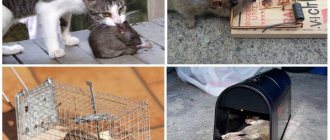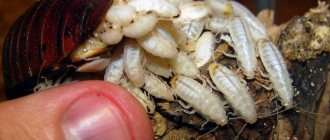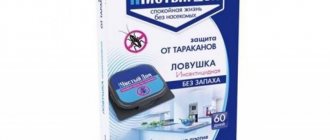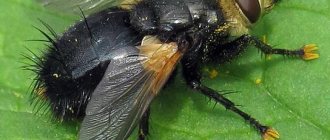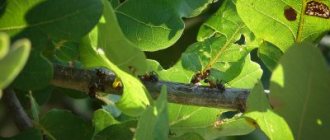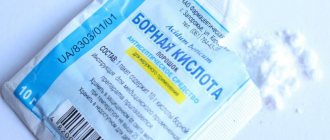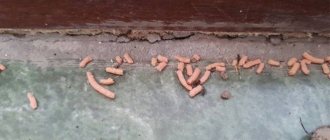Perhaps most people love to welcome guests. But if these guests are some arthropods who decide to have breakfast with you, this definitely causes a storm of negative emotions! Unfortunately, insect infestations are a fairly common occurrence in the homes of many people, who are forced to constantly fight them. It is worth noting that humanity has been trying to destroy insects for thousands of years, either yielding to them or winning an unexpected victory. A huge number of chemical, biological and technical means have been created, the main task of which is to effectively combat insects.
Today, this industry is actively developing, as the demand for goods is growing, and with it, serious competition among manufacturers. In modern conditions, anyone can find a variety of means to rid their home of unpleasant arthropod guests. What are the methods of pest control? And for what?
Why is it necessary to exterminate insects?
As usual, people who have already learned all the “delights” of close proximity to pests do not ask such questions - peaceful coexistence between humans and parasitic insects is impossible in principle. On their paws, insects can carry dangerous infections; they harm things and products, brazenly bite people, causing scratches, abrasions and allergic reactions on the skin. Is it worth mentioning the aesthetic unattractiveness of the very fact of the presence of insects in the house?
Unfortunately, it is almost impossible to insure against their occurrence. They enter houses on shoes, clothes, belongings, through ventilation or sewer openings, through windows and doors, and also simply by moving from a neighboring apartment. Actually, in order to avoid the occurrence of the latter cases, experts recommend treating the premises together with neighbors, otherwise the insects will continue their journey between apartments.
The genocide of insects, carried out on the scale of a house or apartment, is a forced protective measure, the need for which neither Greenpeace nor Buddhists will deny.
Disinsection methods
The main methods of disinfestation include cold fog (fine-dispersed irrigation) and hot fog generation (HAP) technologies. The difference between these methods is the duration and nature of the effect on pests. The residual effect of cold retains its effect longer on treated surfaces when HAP has an immediate fumigation and temperature effect, including on egg laying. Which collectively increases efficiency many times over. As a rule, all main surfaces are subject to treatment, as well as furniture that may be infested with insects and all main communications: ventilation, cable ducts and pipeline areas.
What are the difficulties of exterminating insects?
Having endowed insects with a miniature body, nature gave them colossal survival rate. It’s not for nothing that scientists joke that nuclear weapons, which destroyed the entire planet, will be powerless only against insects.
Did you know that:
- the female bug lays up to five eggs daily, so their number is rapidly increasing every day;
- house bugs are adapted to survive in any conditions; they can also exist autonomously for quite a long time, without receiving food or air;
- ants place their nests in the most inaccessible places for humans;
- several thousand individuals can live in one anthill;
- a cockroach can live without a head for about ten days;
- cockroaches can be without air for up to 45 minutes, and without food for a month;
- cockroaches are omnivorous to the point of disgrace - they sweep away all food supplies, cosmetics, pet food and even their fellow creatures;
- within one hour, the fly lays about a hundred eggs, which also develop at lightning speed;
- fleas have the unique ability to stick their eggs to any surface.
That is why the destruction of insects is a fairly important issue that requires a serious and most thoughtful approach. Indeed, in addition to incredible survival, insects are endowed with almost unlimited abilities for protective mutations. An inaccurately calculated concentration of the drug or an incorrectly selected insect control agent will not only not destroy the parasites, but will also instill in them immunity to a whole range of chemicals, which will significantly complicate your task.
What requirements must insect repellents meet?
Probably, many remember how in the old days insects were poisoned with dust, the “aroma” of which made people feel unwell. Modern means designed to protect homes from insects or completely destroy them must meet certain standards.
The main requirement for all disinfectant products is absolute safety for the health of people and pets.
A high-quality insect repellent should not cause allergic reactions, dizziness or physical discomfort. An equally important parameter is the absence of an unpleasant odor.
Another requirement for disinfestation products is the absence of material damage. That is, they should not harm furniture, clothing, walls and floor coverings, leaving stains or marks.
All insecticides must be certified in accordance with general quality standards.
And, perhaps, the most important thing is that the effectiveness of the product must be sufficient to complete the assigned tasks related to the destruction of insects.
Hot fog
A rather complex generator apparatus with a jet engine acts on the drug by splitting it into tiny nanoparticles, heating it to room temperature.
Thanks to this, the product penetrates into all the smallest cracks and cracks, covering all surfaces with the thinnest film. It is safe for people and animals, but is destructive for synanthropic pests and their oviposition.
There are enough positive points:
- penetration of the product everywhere with guaranteed destruction of parasites and eggs;
- disinfection from viruses and pathogenic microorganisms;
- no preparation is required to provide access to all areas of the premises;
- immediate effect on pests.
Statistics, customer reviews and specialist experience show the guaranteed effectiveness of this method. As with cold exposure, all surfaces are covered with a film of insecticide, which will retain its characteristics for a long time. Larvae that hatch from some surviving eggs will invariably be affected, as will any individuals that come into contact with treated surfaces.
Modern insect repellents
We have already mentioned several times that the modern market offers a huge range of products designed to destroy parasites. However, it is sometimes very difficult for an ordinary buyer to understand this variety, especially if this is the first time a person has encountered a similar problem.
Today, experts prefer to divide all insect repellents into three main groups:
- chemical;
- biological;
- preventive.
Preventive measures against insects in the house
As a rule, preventative agents are effective against the appearance of flying insects - flies, midges, mosquitoes, moths. In this case, preventive measures are aimed at preventing close contact with insects. These include all kinds of repellents (insect sprays and ointments), as well as various barrier prevention methods (specialized apiary suits, mosquito nets). No less effective are technical innovations - ultrasonic insect repellers, the development of which is based on modern knowledge about the communication and behavioral motives of parasites. For example, a very common mosquito repeller today is based on the use of certain sound signals in the ultrasonic range emitted by male mosquitoes. Probably due to concern for their offspring, female mosquitoes that bite people prefer to avoid contact with males during this period.
No less effective preventive measures are insect repellent lamps, fumigators, mosquito coils and many other devices.
Biological substances from insects
These products can be used against insects that settle in people’s homes (flies, ants, cockroaches). In this case, the most common method is a specialized trap. That is, an individual caught in a trap becomes infected with a fatal disease, after which it infects its relatives. The essence of the method is a chain reaction, a kind of local epidemic.
Chemical insecticides
An insecticide is generally understood as any product that is intended to kill insects. This group includes a huge list of drugs designed to influence parasites through chemistry, simply poisoning them. Most often, the form of release of such products is determined either by the direct purpose or by the specific properties of the active substance. For example, flying insect killers are usually available in the form of aerosols or sprays, while products for getting rid of crawling ants and cockroaches are usually available in the form of crayons or powders.
The most widespread on the market are crayons, creams, aerosols, powders and other variations aimed at chemically killing insects.
Modern insect repellents
Modern means are divided into several groups:
- Preventative;
- Biological;
- Chemical;
Preventive agents
Such products are mainly used to eliminate problems from flying pests such as flies and mosquitoes. They don't allow them to get close to your body. This includes various ointments and sprays, mosquito nets and special clothing for beekeepers, as well as modern ultrasonic devices that emit a certain signal in this range.
Biological agents
Biological agents are used against domestic insects, such as cockroaches. The most common trap is based on infecting the caught individuals with a deadly disease, which is subsequently transmitted to others.
Chemicals
They can also be called insecticides. Most of them poison insects with special chemicals that are distributed accordingly to the species against which they are intended. For example, if against flying insects, then it will be a spray or aerosol, and for cockroaches - powder or chalk.
What methods are used to exterminate insects?
Following the example of dividing insect repellents into subgroups, methods aimed at combating them can also be classified.
Effective folk remedies
If for some reason (financial problems, precautions due to the presence of small children in the house, or simple forgetfulness) it is impossible to purchase a full-fledged insecticide, our grandmothers’ recipes are used.
Do not underestimate or be skeptical of the wisdom of experience accumulated over generations. In practice, many of these measures are justified. However, sometimes the effectiveness and longevity of the results obtained leaves much to be desired.
Modern flies absolutely do not want to drown in sweet water, just as cockroaches cheerfully breakfast on potatoes, eggs and boric acid balls.
But mosquitoes are really afraid of sharp specific odors, which also bother all residents...
The main advantage of all folk remedies is their exceptional environmental friendliness, as well as the low cost of the necessary ingredients for preparing the remedies.
Homemade insect repellents
This technique implies the competent use of appropriate products from the supermarket assortment. All kinds of traps, powders, crayons and sprays - any of these products can forever save you from the unpleasant neighborhood of mosquitoes, moths, midges, wasps and fleas. You will have to work a little in the process of getting rid of species such as flies, ants, cockroaches, since in these cases a one-time procedure can turn into protracted military operations.
And the independent extermination of bedbugs and ticks looks completely sad. This is a rather complex and initially economically unprofitable operation, which is better to entrust to professionals, or to replace the contaminated furniture with new ones.
Professional help or heavy artillery
Today, pest control issues are professionally dealt with not only by SES services, but also by various private organizations whose main activity is the destruction of insects.
If we compare the efforts and funds independently spent on such events with their final effectiveness, then we can make a completely reasonable conclusion about the profitability of the services of specialized companies. Any of these organizations provides a one-year guarantee for the disinsection performed. It is most effective and convenient to trust professionals with work aimed at exterminating ticks and bedbugs, since with the help of special equipment, specially trained employees will be able to carry out all the work perfectly.
Specialists in this industry constantly monitor new scientific research in the field of identifying the behavioral preferences of insects and study new specialized means aimed at destroying parasites. However, most often their services are too expensive for the majority of the population.
Main aspects of disinfestation
First of all, when preparing for an operation to destroy unwanted neighbors, the immediate habitats of pests should be identified and pre-treated. These could be ventilation ducts, garbage disposals, plumbing lines. In addition, close attention should be paid to places where insects are likely to move “paths” (sockets, door frames, baseboards, other hidden surfaces).
The main condition that must be adhered to when exterminating insects in a living space is complete and thorough processing, without “hackwork” or omissions. After all, it is important to exterminate not only adult individuals, but also to identify secluded places where the larvae are located, and correctly calculate the means to create invisible protection for the entire life cycle of pest eggs. This is the only way to prevent relapses, accompanied by the reappearance of offspring of cockroaches, bedbugs, and flies.
In any case, the success of disinfestation can be assessed by the presence of insect corpses after the measures taken, as well as by the increased (literally panicky) activity of the surviving individuals.
How to remove insects from an apartment
Chemical methods
This method of getting rid of insects is the most popular and effective. For each type of infection, there are different substances that have a narrow focus. Poisons include insecticides, larvicides, acaracids, and ovicides. In addition, repellents are used.
REFERENCE! Often, exterminators from special services use a fog effect to spray chemical liquids.
Different types of fog are generated by special devices:
- cold fog;
- hot fog, when the poisonous liquid is preheated to enhance the effect.
Carrying out disinfestation in this way is the most effective. Conventional spraying does not keep particles in the air and does not cover large areas as fog does.
Physical methods of disinfestation
Typically, physical pest control methods include exposure to low or high temperatures. For reproduction and development, arthropods need optimal temperature conditions. Cold or heat interferes with their ability to function. In this case, the parasites can either die or seek better conditions for themselves.
REFERENCE! Cooling down your home is not practical, but high temperatures can be used locally.
For example:
- boiling - can be used to get rid of lice and their eggs from linen, curtains, furniture covers;
- steaming - using this method you can warm up mattresses, upholstery, fabric;
- warming up the air will create impossible conditions for the survival of insects;
- ironing - with this you can kill small parasites and their eggs.
Other means
Biological
This method is used only in agriculture under the strict supervision of professionals. To do this, pathogenic microorganisms are sprayed into pest habitats. This causes diseases in insects that lead to death.
Mechanical
This method uses various traps and barriers. The device is installed in places where animals accumulate and attracts them. All traps can be divided into the following types:
- electric - lure flying and crawling insects to the light. When a pest approaches the trap, it is killed by a discharge of electricity;
- adhesive - includes adhesive tapes, sold in any hardware store, or made by yourself. Insects are attracted to the sweet aroma, and once they get into the trap, they cannot get back out;
- luring - a combination of bait and chemistry. With this method, the pest must taste the bait and get poisoned;
- collecting - the pest climbs onto the smell of the bait, but cannot get out of it. You can make this with your own hands, for example, from a plastic bottle.
REFERENCE! According to reviews, traps are the most ineffective way to control small insects.
